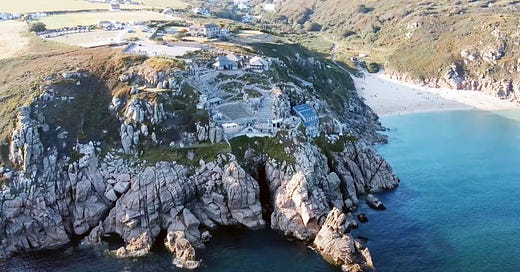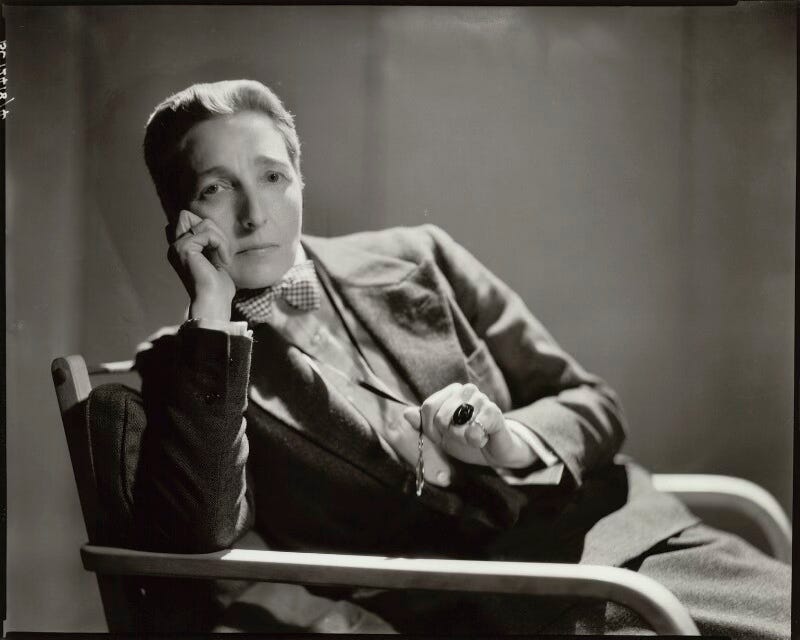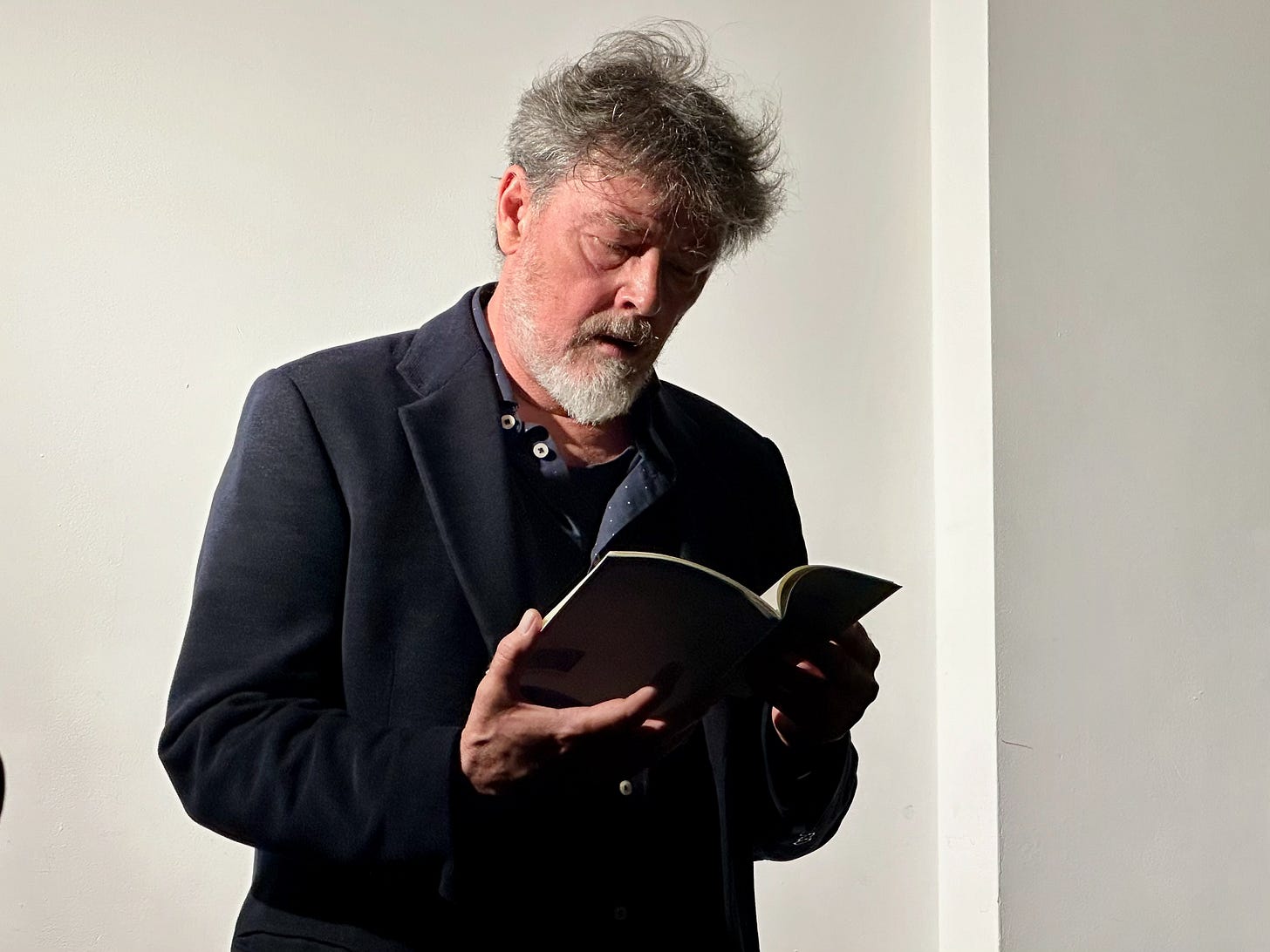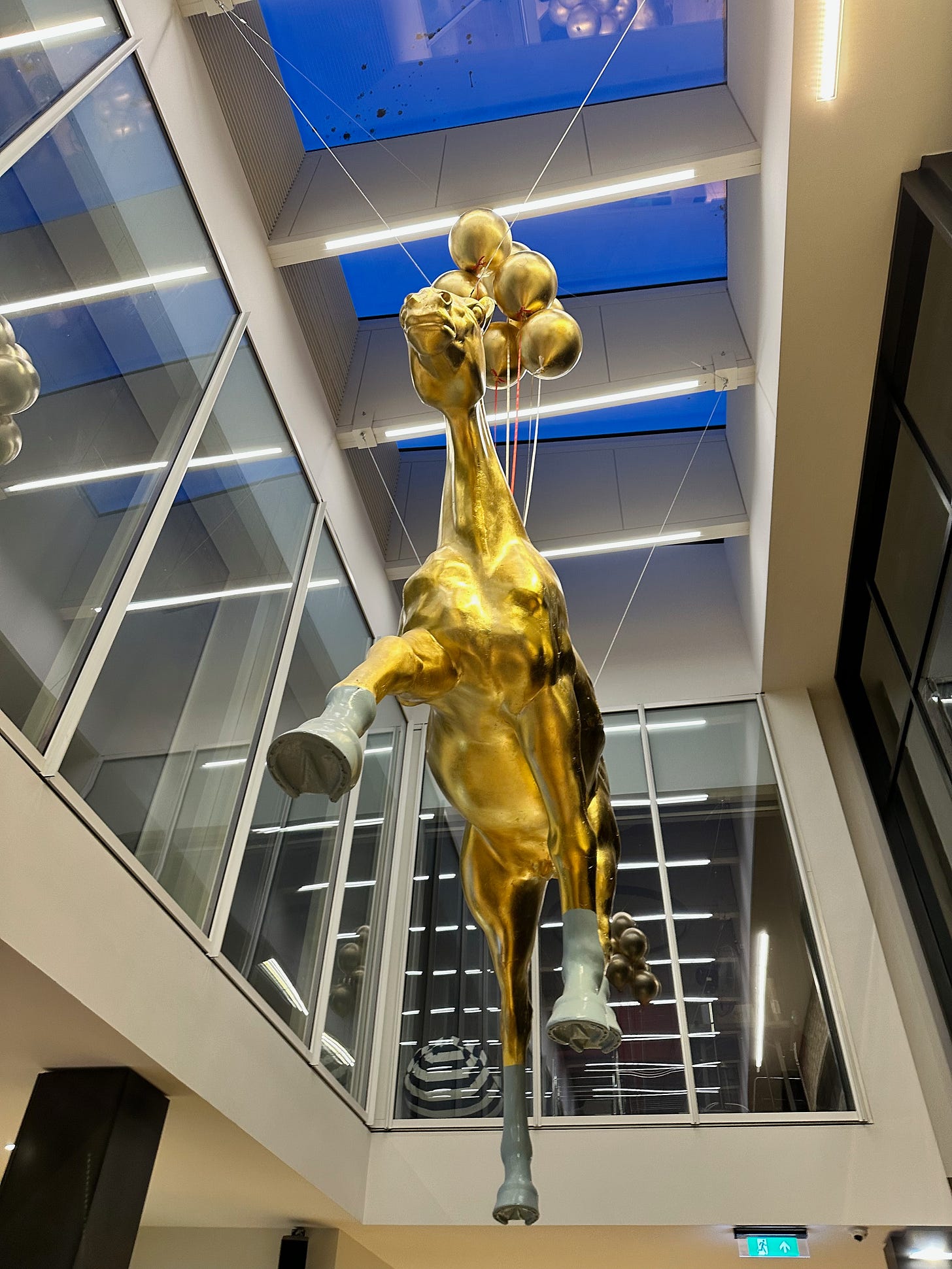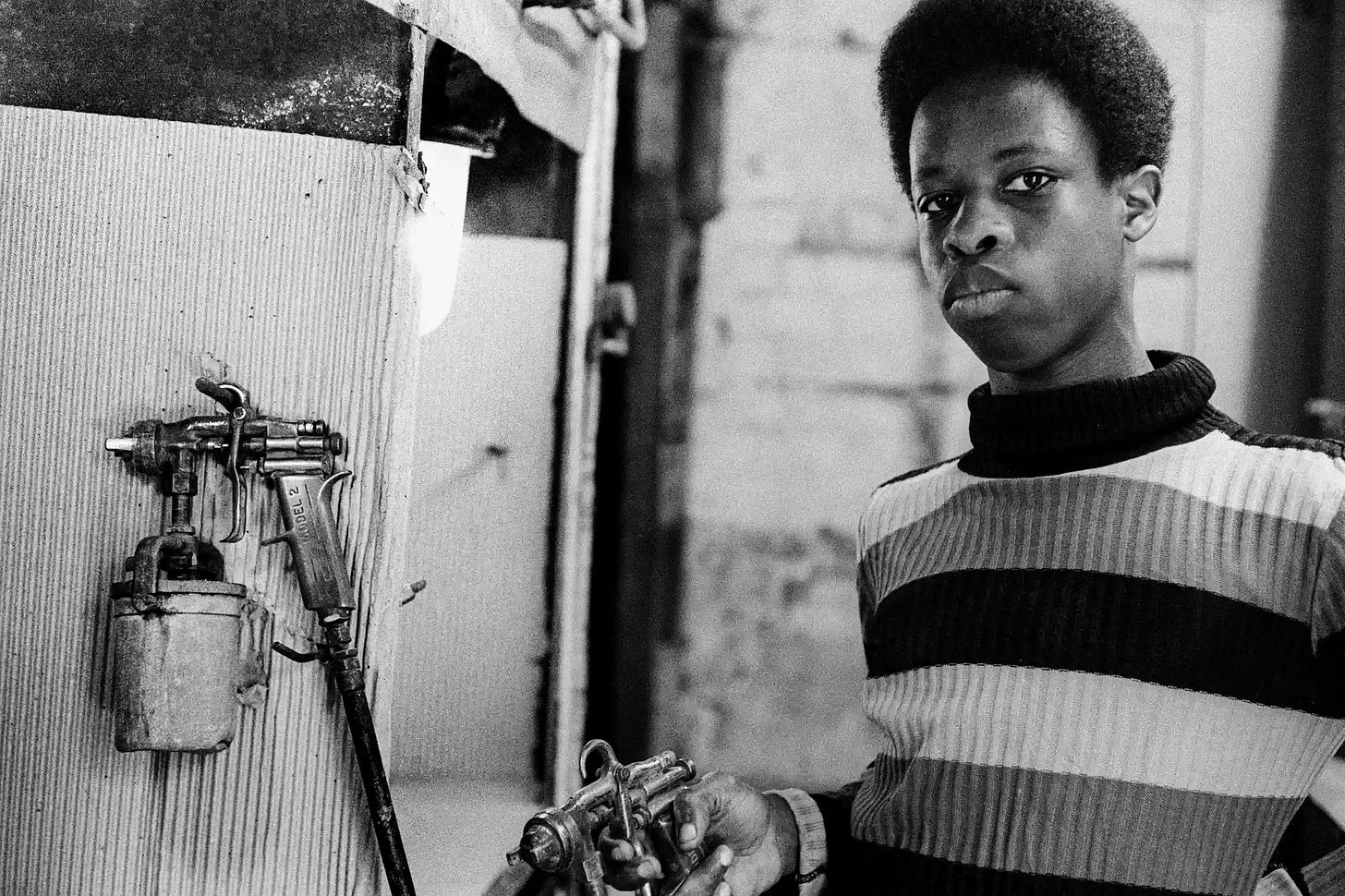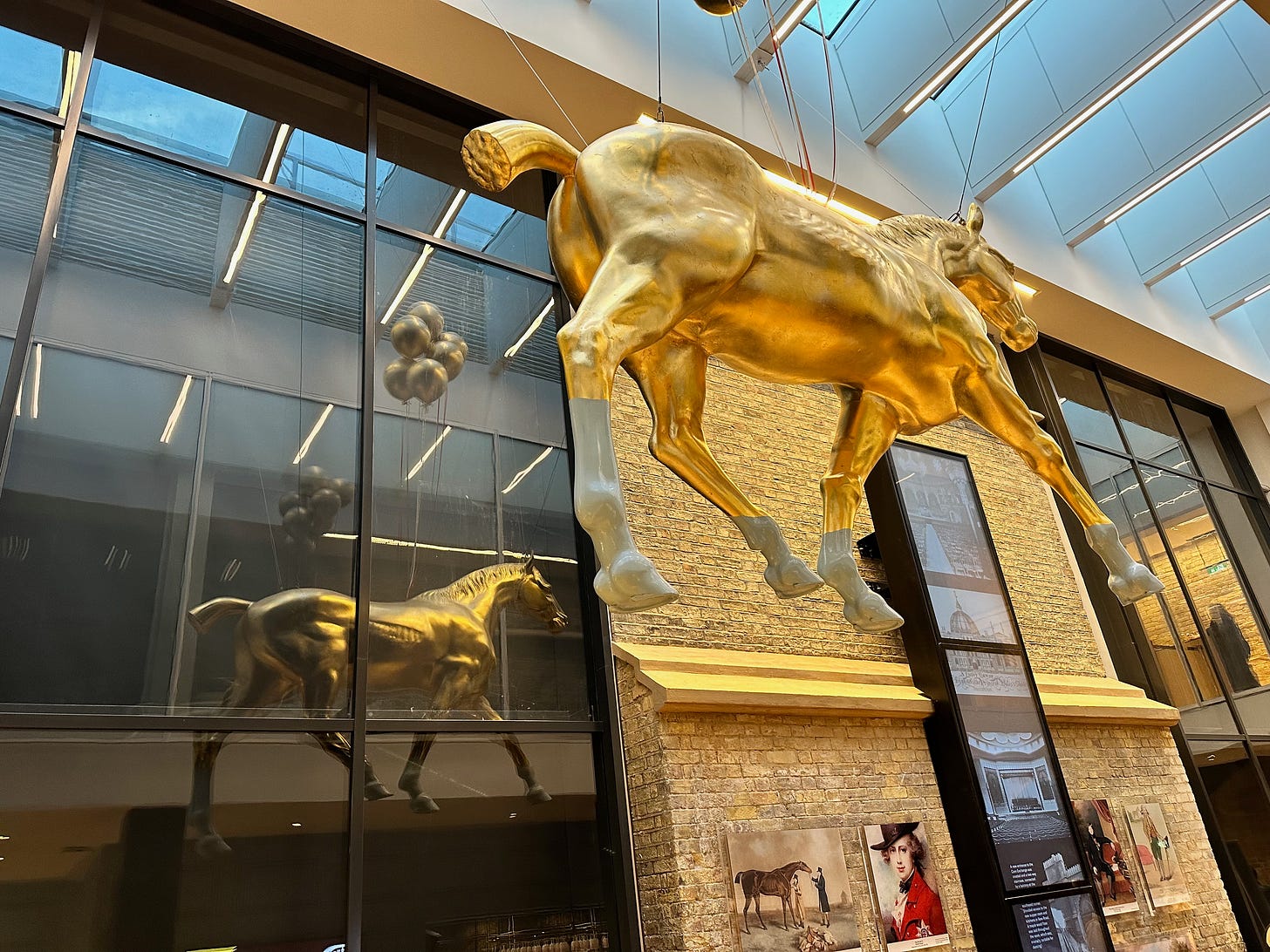Welcome back to this Patch of Sky double header.
Faces in clouds
As I trundle through my abime and develop these posts, perhaps I’m suffering from a kind of pareidolia. According to the OED it’s the perception of recognizable patterns or images, in random or vague arrangements of shapes, lines, colours, etc. ‘It’s that tendency for perception to impose a meaningful interpretation on a nebulous stimulus,’ Wikipedia explains, ‘usually visual, so that one detects an object, pattern, or meaning where there is none. Pareidolia is a type of apophenia’ – seeing patterns in random data.
Looking at a photograph of The Minack Theatre taken from the air I felt I could discern the head of one of Rowena Cade’s spaniels in the mass of the cliffs. (Can you see it?)
Very like a whale
Shakespeare had some fun with pareidolia in Hamlet.
HAMLET Do you see yonder cloud that's almost in the shape of a camel?
POLONIUS. By th'Mass and 'tis, like a camel indeed.
HAMLET Methinks it is a weasel.
POLONIUS It is backed like a weasel.
HAMLET Or a whale.
POLONIUS Very like a whale.
Thinking of Galen Strawson again, could autobiographic narrative be a sleight of hand, a variety of pareidolia? Apropos of which take a look at Stories are bad for your intelligence:
The Night Alphabet
‘The story is a sinuous, slippery thing,’ said Wendy Ide in her review of La Chimera.
A line is also a fundamental connecting link in Joelle Taylor’s The Night Alphabet. The poet, playwright and author gave a splendid performance of three of the stories at the Studio Theatre at Brighton’s Dome as part of Brighton Festival, in a show developed with producer Neil Bartlet and with graphics by Emily Witham, animated for projection by Tommy Burlington.
Taylor talked of how she was 'chased out' of her body when raped aged five. How 'somebody took' her body. She now she writes 'embodied poetry' as an antidote, reclaiming her body as she does very much in The Night Alphabet, all part of her project of 'queer futurism'.
She described how the novel creates a lifeline, a narrative line linking different tattoos on a body. It reminded me of an interpretation note at the Carolee Schneemann exhibition at the Barbican a few years ago. Schneemann imagined 'the body as a series of interconnected rooms occupied by a community of miniature inhabitants'
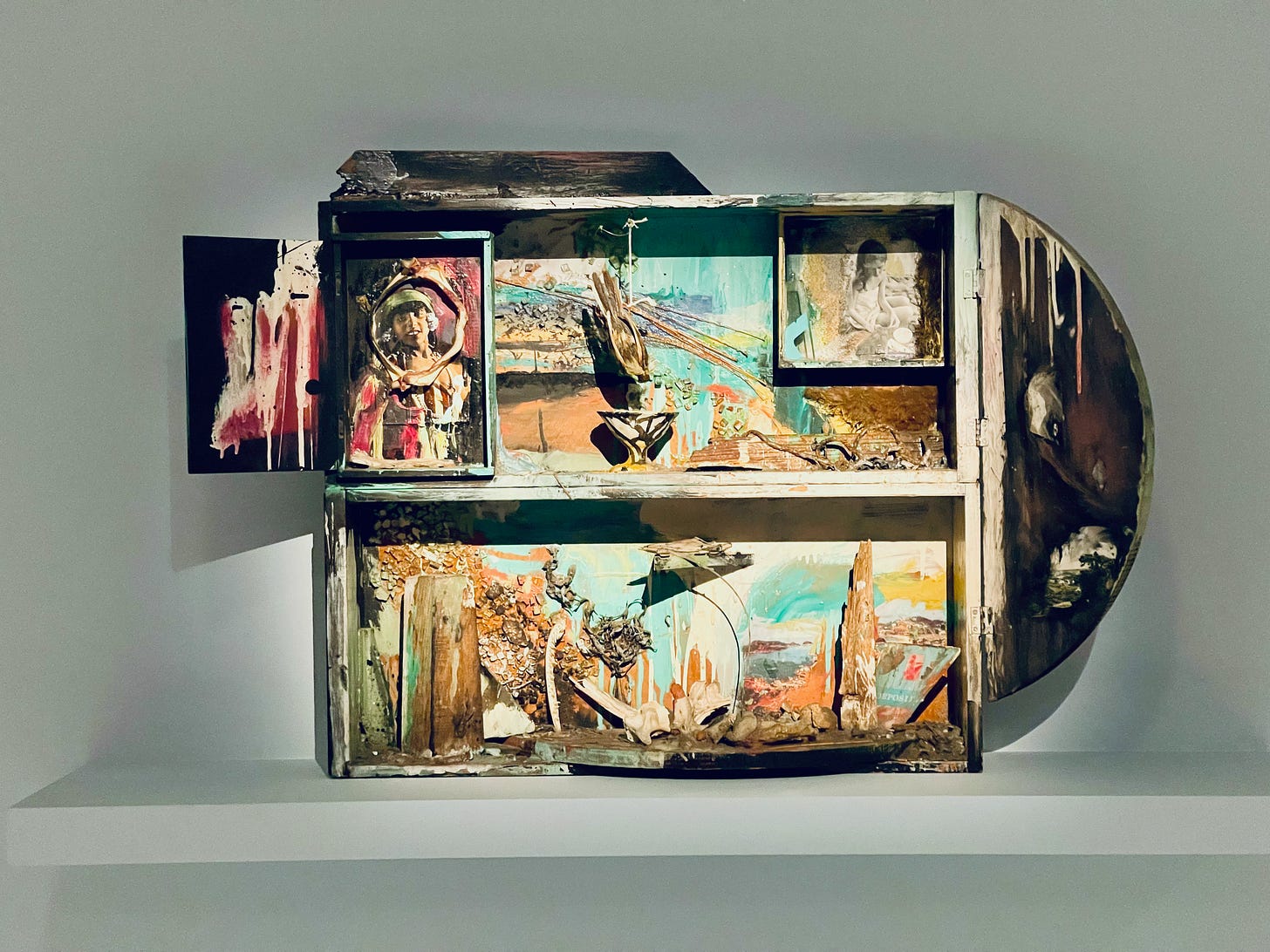
Joelle talked about the way she can see traditional narrative structures as having a masculine, or rather perhaps a macho morphology and suggested – perhaps partly in jest – that a more female narrative morphology would involve cycles, pregnancy, repeated climaxes. Another connection with the non-narrative ideas of Galen Strawson.
It seems to me that La Chimera explores exactly Taylor's kind of narrative morphology, with multiple climaxes, excursions, cycles and even a Calabrian balladeer, a cantastorie, singing part of the story – Valentino Santagati accompanied by Piero Crucitti playing triangle and squeeze box with expert skill.
Tracing queer history and the connection of tattoos and criminality, 'All art is resistance,' says Joelle Taylor.
I’ve a horse outside
As part of my research into context - both lesbian and equine – I’ve recently finished reading Radclyffe Hall’s The Well of Loneliness – 'The archetypal lesbian novel' (TLS) and ‘The bible of lesbianism' Irish Times.
It's a tremendous read, and there's a very moving storyline about the 'invert' Stephen Gordon and her relationship with her horse Raftery (named after the Irish poet Antoine Ó Raifteiri, known as the last of the wandering bards.)
‘The hunter, when he came, was grey-coated and slender, and his eyes were as soft as an Irish morning, and his courage was as bright as an Irish sunrise, and his heart was as young as the wild heart of Ireland, but devoted and loyal and eager for service, and his name was sweet on the tongue as you spoke it—being Raftery, after the poet. Stephen loved Raftery and Raftery loved Stephen. It was love at first sight, and they talked to each other for hours in his loose box—not in Irish or English, but in a quiet language having very few words but many small sounds and many small movements, which to both of them meant more than words. And Raftery said: “I will carry you bravely, I will serve you all the days of my life.” And she answered: “I will care for you night and day, Raftery – all the days of your life.”
I wandered lonely as a cloud…
Talking of wandering bards, Brendan Cleary is making a good recovery after his strokes in the winter, and gave a reading at London's Poetry cafe to launch his new collection from Tall Lighthouse, Last Poems? (Note the ironic question mark.)
Tim Cumming, Brendan's friend from their Ken Smith days, read from Adventures Among The Living, a suitable complement to Brendan’s collection. And American poet Michaela Coplen presented work from her Oxford Brookes Ignition Press collection Finishing School. Full marks to Les Robinson who runs Tall Lighthouse. He says he needs a break. He's 75 this year although he doesn't look a day older than 74 . In fact he's in great shape...and that takes us back to…
Morphology again...
Biology The branch of biology that deals with the form of living organisms and their parts, and the relationships between their structures. Formerly: spec. the comparison of the forms of organisms and their parts in order to identify homologous structures
Originally and chiefly Science. Shape, form, external structure or arrangement, esp. as an object of study or classification. Also: a particular shape, form, or external structure, esp. of (a part of) an organism, landform, etc.
Linguistics. The structure, form, or variation in form (including formation, change, and inflection) of a word or words in a language; the branch of linguistics that deals with this.
General The history of variation in form.
And then we need to consider the morphology of chimera, which, as the definitions accumulate, seems to be representative of narrative’s pareidolia!
A fabled fire-breathing monster of Greek mythology, with a lion's head, a goat's body, and a serpent's tail (or according to others with the heads of a lion, a goat, and a serpent), killed by Bellerophon.
The Rabbit-fish, a local name for the Northern Chimæra, or King of the Herrings.
A grotesque monster, formed of the parts of various animals.
Figurative with reference to the terrible character, the unreality, or the incongruous composition of the fabled monster:
An unreal creature of the imagination, a mere wild fancy; an unfounded conception. (The ordinary modern use.)
An incongruous union or medley.1
Crazy but true? Maybe not…
A Patch of Scyros
That word morphology cropped up at the launch of Maggie Nelson’s new book Like Love, at the Royal Festival Hall at London’s SouthBank, where she was interviewed by Shon Faye. Both women received a rapturous welcome from the audience of mainly young people although there were a few crusties like me present.
I guess quite a few in the audience would describe themselves as non-binary and there seemed to be general agreement and hope that the world is on the eve of a cultural revolution where people will not be defined by the gender of their genitalia. Rather there will be people with penises, people with breasts. It takes a while to bend the mind around some of these issues and I worry how many babies may be thrown out with the bathwater, not least ‘motherhood’ and ‘fatherhood’.
Interestingly for me these issues f gender and sexuality are exactly the ones that Rowena Cade’s sister Katharine dealt with in many of her novels eighty to a hundred years ago, in the nineteen twenties and thirties. There’s not much new about woke.
Coincidentally, (see above in The Night Alphabet), Maggie Nelson read from the chapter in her book entitled, The Reenchantment of Carolee Schneemann Part 1, and towards the end of her reading my ears pricked up as I heard a description she referenced from Ralph Waldo Emerson.
‘The intensity of Carolee's interest in morphological and symbolic correspondences, which of course bloom into visibility only under the artists power of attention, brings her into the analogical realm described by Emerson. ‘It is easily seen that there is nothing lucky or capricious in these analogies, but that they are constant and pervade nature. Man is an analogist. He is placed in the centre of beings, and an array of relations passes through from every other being to him.’2
Without telling us, Nelson has quoted selectively from Chapter IV of Emerson’s Nature, published in Nature; Addresses and Lectures, where he writes in full:
‘It is easily seen that there is nothing lucky or capricious in these analogies, but that they are constant, and pervade nature. These are not the dreams of a few poets, here and there, but man is an analogist, and studies relations in all objects. He is placed in the centre of beings, and a ray of relation passes from every other being to him. And neither can man be understood without these objects, nor these objects without man. All the facts in natural history taken by themselves, have no value, but are barren, like a single sex.’3
Nelson notes that ‘Carolee's wager has been to put herself at the centre and to insist that the rays of relation passing through her, a female human being, matter just as much as they might, if passed through Emerson’s self reliant man.’
As Schneemann herself wrote in Unexpectedly Research: ‘I had to understand why there were no women artists in my inherited history. I had to crack the shell, to invert, turn over, smash open. Why language and all speaking existed in only one gender - male - and all that was female was by inclusion, prescription, allowance...’4
The sense of a person being at the focal point of an array exactly mirrored my interpretation of a particular scene that I have been writing about. The incident took place at Cheltenham Ladies College in 1912. It involved Rowena Cade when she appeared in the chorus of Robert Bridges play Achilles in Scyros. This incident seems to act like a magnifying glass focusing and coalescing all the different issues and narrative strands in the book I’m working on. This scene on stage at the Ladies College over a hundred years ago seems to be irradiated by key issues of our time - of gender, sexuality, feminism, male fear of change, fear of of the other, warnings of war and its after-effects, in sum – ‘the world turned upside down’.
As Joelle Taylor said 'Inside one story is another story'.
Before the section quoted above Emerson wrote: ‘Man is conscious of a universal soul within or behind his individual life, wherein, as in a firmament, the natures of Justice, Truth, Love, Freedom, arise and shine. This universal soul, he calls Reason: it is not mine, or thine, or his, but we are its; we are its property and men. And the blue sky in which the private earth is buried, the sky with its eternal calm, and full of everlasting orbs, is the type of Reason. That which, intellectually considered, we call Reason, considered in relation to nature, we call Spirit. Spirit is the Creator. Spirit hath life in itself. And man in all ages and countries, embodies it in his language, as the FATHER.’
Wo! That all sounds SERIOUS, DAD! And now my patch of sky is ‘the type of Reason’!
It makes me want to ask ‘What Power art Thou?’ as Samuel Youn sings from Purcell's King Arthur on his album From Darkness to Light.
It's the same kind of question that passes through my mind when I meet real horses in the flesh, their presence and physicality is so impressive.
It was the same question that echoed through my mind when I saw a giant golden horse flying above me in the Studio Theatre foyer as I waited for Joelle Taylor to sign my book. What Power art Thou? Or to play with words, What Power Art art Thou?
A few quick notes to finish this Patch of Sky double issue
TV - Series 2 Tokyo Vice shaping up well.
Poetry - a very enjoyable evening at Brighton's Theatre Royal listening to Brian Bilston and Henry Normal. Brian, (poet, philosopher, failure) is the poetic persona played by Paul Millicheap, who was born in that holiest of cities, Birmingham. Who knew? I reckon some of that city's famously dry humour nestles in the work of Paul's alter ego.
Music - Collectress gave a performance as part of the Bird Bath – Dusk meditation and improvisation at St Peter's Church, Preston Park, as part of Brighton Festival. Cycling, enchanting music with a femininist morphology? Music that would work as a great bed for the spoken work, rather than birdsong, I felt. And personally, I could have done without the meditation. ‘Collectress honour intuition and process,’ says their website. ‘Music emerges on the fly or is spun from long periods of playing and sharing; talking and swapping. Their compelling narratives are dark and light by turns, cellos sing over jagged krauty synth harmonies, electronic glitches interrupt melodic violin lines, handmade percussion and found sound weave among layered vocals and well-directed mischief.’ Worth a listen.
As is Pet Shop Boys' new album Nonetheless, especially the track Why am I dancing? A question I often ask myself, along with the Wu Li Masters – Gary Zukav's book of the same name about quantum physics. Oh, no! I'm back in the abime: ‘Zukav explains the concept further: The Wu Li Master dances with his student. The Wu Li Master does not teach, but the student learns. The Wu Li Master always begins at the center, the heart of the matter...’
Books: Then even further in the abime, you'll find Vulcan's Forge, Janine Wiedel's photographs of West Midlands industry in the late 1970s. I remember it well.
That's it for the double issue. See you in July, under a new patch of sky! Watch out for flying horses!
Postscript:
Thanks to Katie Fowler, Senior Communications Officer, Brighton Dome & Brighton Festival for the following about the flying horse that hovered over me at Joelle Taylor’s gig:
‘In the Gallery Bar, architectural design studio Drinkall Dean have used the Corn Exchange’s original purpose as a riding house as the inspiration for decoration. The space features Regency colours and motifs plus name carvings remembering each of the Prince Regent’s horses. A spectacular sculpture by West Sussex-based artist Graham Heeley is suspended in the atrium, inspired by a painting of one of the Prince’s favourite horses, Nonpareil. On the wall, more historic images recall the venue’s time as a riding house and an interactive digital timeline, from digital designers SquintOpera, allows visitors to explore Brighton Dome’s heritage from the 1800s to the present day.
All definitions from the OED online again https://www.oed.com. You can access the full version for free with your library card.
Referenced from the Penguin Audio version of Maggie Nelson’s, Like Love (London, 2024)
https://emersoncentral.com/texts/nature-addresses-lectures/nature2/language/
1992 Laser prints and text on board, Carolee Schneemann Foundation, Barbican Gallery, December 2022


